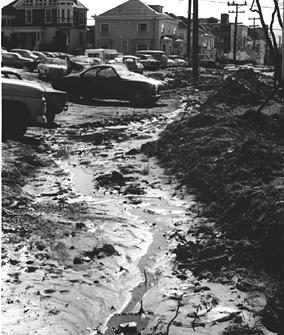For endless generations, Native Americans have been the stewards of the geographic area that would one day become the City of Berkeley. The San Francisco Bay Area is the home to the Muwekma Ohlone Tribe, also called San Francisco Bay Costanoan people. The Muwekma Tribe is composed of over 35 tribal bands living across an area extending from the present day City of San Francisco, south to the San Jose metropolitan area, east to Patterson, and along the East Bay coastline through what is now Oakland, Berkeley, Richmond, and Concord. Present day Berkeley is where several Ohlone bands have been recorded on historical maps including the Joaquin and Huchiun bands (Muwekma Ohlone Tribe 2020).
Human occupation of the east San Francisco Bay Area extends back for thousands of years. The “historical period,” which describes life in what is now the United States since 1492, is only the most recent chapter in history. Before the arrival of non-Native Americans, Ohlone and Miwok, and their ancestors are the first recognized peoples in the Bay Area. Spanish colonists established the earliest non-Native presence and were followed by Mexican citizens when California became part of Mexico in 1821. California became an independent republic for a short time after 1846 before it became the 31st state in 1850. The City of Berkeley was incorporated in 1878. The population continued to grow since its incorporation until the 1960s. Archival documents show this growth lead to the urban development of the area that is now People’s Park.
Earliest Prehistoric Sites of California
The oldest prehistoric sites of the greater San Francisco Bay area were identified as “island” mounds in the northern region. With the oncoming of the last ice age ending 15,000 years ago as well as the hypothesis of the First Americans following the coastal route across the Kelp Highway to central Chile, early California occupation dating to around 12,000 years ago is strongly supported (Erlandson 2015). The warming climatic factors creating the San Francisco Bay areas ecologically rich islands helped to support the populations of Native American Ohlone and Miwok people before Spanish encounters. By residing on these islands, precontact lifeways established by gathering, fishing, and living off of the resources both on land and sea are evident in the archaeological record consisting of bone tools, shells, and mounded features. Most of California’s earliest prehistoric sites (and a few becoming a historical multicomponent site) were found at Angel Island (CA-MRN-44/H), Marin County, Santa Cruz County, and Lake County. With the earliest site dating to around 12,000 years ago, these sites are lines of evidence showing precontact human populations occupying the greater San Francisco Bay before later assemblages on the mainland were discovered and classified (Erlandson et al. 2007).
Later Prehistoric Sites of the Bay Area
During their discovery in the late 18th century, the greater shell middens known as the Emeryville Shellmound (CA-ALA-309) and West Berkeley Shellmound (CA-ALA-307) revealed how precontact people lived over the last 2,500 years. From the earlier island sites in Northern California, these precontact populations migrated from their coastal isles to the mainland. Ellis Landing (CA-CCO-295) represents the larger settlement pattern that spread out across the San Francisco region, with evidence of occupation at large shell mounds for around 3,000 years. Investigations of Californian mounds by archaeologists have brought evidence of repeated use over thousands of years for these multicomponent sites, indicated by basal deposits yielding a date between 5,000 and 3,000 years ago (Lightfoot and Parrish 2009). The spatial distribution of mounds is usually located in clusters from three to fourteen sites closest to a shore or freshwater stream. Shellmound sites contained large to small shell-bearing layers, earth mounds, or petroglyphs as well as bedrock milling stations or lithic scatters (Luby 1999).
The two “types” of shellmounds to be classified into are “contained” shellmounds, where the sites are densely compacted together; to “open” shellmound sites where they are dispersed and spread out into the landscape. Shell middens and mounds were important prehistoric archaeological features intensively studied by California archaeologists of the past and present. UC Berkeley archaeologist Nels Nelson recorded and excavated a substantial amount of shell midden features in the Bay Area, contributing to the archaeological background of precontact sites. Field reports noted the location of mound locations to be found across the shore, with the convenience of easy access to large bodies of water. Nelson also documented how such middens were highly exposed to the surface, composed of richly dense shell, bone, artifacts, and anthropogenic soils (Nelson 1909). With the past shoreline being much different from the built environment of today, the majority of the San Francisco Bay Area’s prehistoric shell middens and mounds are densely packed across Alameda and Contra Costa counties. Examples of this include not only the Emeryville Shellmound but also the Stege Mounds (CA-CCO-297, 298, 299) all consisting of deep depth of many stratigraphic layers, revealing the diachronic use and time for the Ohlone and Miwok people.
The mounds closest to People’s Park are the Emeryville and West Berkeley Shellmounds, which are both associated with the Ohlone people and community. Archaeologists and anthropologists believe that by 300 to 500 A.D., the Ohlone culture and languages evolved, split, and combined with other regional dialects as the migration from island to mainland occurred. Evidence of prehistoric migration patterns can be traced back to the descendant communities of the San Francisco Bay Area today, understood through the linguistic and cultural diversity of the Ohlone polities existing in the past landscape: with 80 to 100 Native languages being documented from the various polities during colonial encounters. Elites, religious specialists, craft specialists, and commoners formed these bands or polities across the crowded geopolitical California landscapes of the past (Lightfoot and Parrish 2009).
| Periods and Phase Systemics Archaeologists Use in Coastal California | |||
| Era-History | Phase | Sub-Phase | Date Range |
| Present | European-American | 1,850 AD-Present | |
| Spanish-Mexican | 1,500-1,850 AD | ||
| Post-Classic Period | |||
| Present | 1,500 AD-Present | ||
| Mesoamerican | 1,000-1,500 AD | ||
| Archaic Period | Late Archaic | 3,000-1,000 BC | |
| Intermediate Horizon 1,500 BC-1,000 AD | |||
| Middle Archaic | 6,000-3,000 BC | ||
| Millingstone Horizon 5,500-1,500 BC | |||
| Early Archaic | 7,500-6,000 BC | ||
| Paleo-Indian | 11,500-7,500 BC | ||
| (Source: Gamble 2015; Smithsonian 1978) |
Before the Park: Before the Archaeologists
Ohlone people in the East San Francisco Bay were oriented towards the sea but also carefully cared for and crafted the landscape, encouraging beneficial plants and animals that enabled them to raise their children, nourish themselves, and take care of elders. Archaeologists and anthropologists understand that California Indians used a variety of methods to maintain plant growth including printing selected plants, sowing seeds, weeding, and prescribed burning to remove debris and weedy plants. The result was successions of grasses, open oak tree groves, and forests able to withstand wildfires (Lightfoot and Parrish 2009:10). On the shoreline of the San Francisco Bay, Native people fished from the shore and in sturdy watercraft. Boats made from reeds and rushes were packed into bundles that were lashed together to form the hull of canoes, typically large enough to carry as many as five people, that were seaworthy and capable to ply swiftly through the Bay’s waters in search of surfperches and jacksmelts (Des Lauriers 2015; Lightfoot et al. 2015). Shellfish were procured closer to shore in such success that, over generations, shells from the resulting harvest grew into large mounds that dotted the Bay’s shores.
Native people in the East Bay sought to create sustainable economies— natural resources that would be reliably available for generations into the future. Marine resources like fish and shellfish were important but Native people in the East Bay also relied heavily on land-based resources. Fires and plant stewardship were used to build plant communities that supported valued land animals like deer and encouraged healthy oak groves where acorns could be harvested (Lightfoot and Parrish 2009). Ohlone people used a complex understanding of natural resources and local microclimates built from generations of experience to engineer landscapes long before the arrival of non-Native people. Ohlone people continue to be stewards of this region, caring for its natural environments in hope that it will continue to support people in the future.
References
Des Lauriers, Matthew
2015 Watercraft in Coastal California. In First Coastal Californians, edited by Lynn H. Gamble. Pgs. 31–36. School for Advanced Research Press, Santa Fe.
Erlandson, Jon M., Torben, C. Rick. (2015) The Kelp Highway and the First Californians. In The First Coastal Californians, Lynn H. Gamble, editor. School for Advanced Research, Santa Fe.
Erlandson, Jon M., Graham, Michael H., Bourque, Bruce J., Corbett, Debra, Estes, James A. and Steneck, Robert S. (2007). The Kelp Highway Hypothesis: Marine Ecology, the Coastal Migration Theory, and the Peopling of the Americas’, The Journal of Island and Coastal Archaeology, 2: 2, 161 — 174
Gamble, Lynn H. (2015) First Coastal Californians. School for Advanced Research Press.
Lightfoot, Kent and Otis Parrish. (2009). California Indians and Their Environment. University of California Press.
Luby, Edward M. (1999). The Dead Must be Fed: Symbolic Meanings of the Shellmounds of the San Francisco Bay Area. Cambridge Archaeological Journal 9:1 (1999), 95-108.
Muwekma Ohlone Tribe. (2020) Muwekma Ohlone Tribe of the San Francisco Bay Area. http://www.muwekma.org Accessed April 28, 2020.
Nelson, N.C. (1909) Shellmounds of the San Francisco Bay Region. University of California Press.
Smithsonian Institution. (1978) Handbook of North American Indians. California. (Vol. 8). Ed. Robert F. Heizer. Library of Congress.

